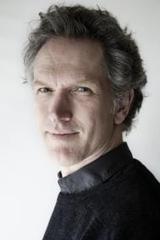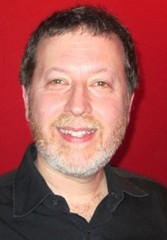|
Back
Canons to the Left of Us, Canons to the Right of Us... New York
Miller Theater, Columbia University
03/24/2016 -
Hans Abrahamsen: Schnee
Ensemble Signal: Keli Kathman (Flute), Jackie LeClair (Oboe/English horn), Adrián Sandí (Clarinet), Bill Solomon (Percussion), Oliver Hagen, David Friend (Piano), Courtney Orlando (Violin), Victor Lowrie (Viola), Lauren Radnofsky (Cello) Brad Lubman (Conductor)

H. Abrahamsen (© Tine Harden)
So memorable was Hans Abrahamsen’s monodrama with Paul Griffiths on the words of Shakespeare’s Ophelia, let me tell you (read here), that I went to his “Composer’s Portrait” at Columbia University hoping that this sense of wonderment would continue. The single piece, the hour-long Schnee (Snow), was indeed wonderful in some ways. Yet in other ways, it was so distant, such a mystical way of looking at snow, that it left me far colder than snow itself.
Part of this coldness came from reading the Paul Griffith’s program notes before the performance. As always, they were graphic and picturesque. At the same time, they entered the fields of musical theory, tying up with the composer’s own words that he had been inspired when re-setting a group of Bach fugues.
Thus, we had descriptions of five canons, each with their own reflective canon. This, along with three intermezzi. The canons were in proportion with each other, reflected each other, had (as all canons have) propositions and antecedents etc. etc.
Not difficult theory, but before it began, I had been had been dispatched from the poetry of the work.
And poetic it was. From the start, when the piano began its childish melody in upper keys which had their own hammer notes, Mr. Abrahamsen produced sounds that well could have been metaphorical snow. With the piano in this first canon came sounds–or rather barely heard non-sounds from Courtney Orlando’s violin. We saw the bow, yet heard only faint faint vibrations which turned into an equally remote squeaking.
Now we had the alternate canon, with more snowy orchestration. Could snow really sound like percussionist Bill Solomon rubbing paper against wood? Tan Dun has tried to produce the same sounds, yet somehow here they were put into the context of more unorthodox orchestration.

B. Lubman (© Samuel A. Dog)
The music of Ensemble Signal conducted by the always meticulous Brad Lubman continued with more original consorts for each canon. One heard echoes from the pianos, fingers running up and down that piano without tones, silences from the winds, and at a certain point the top was taken off the clarinet and Adrián Sandí hit his hands against the instrument. Or, with surprising literalness, in line with the usual Rimsky/Glazunov/Jingle Bells litany, Mr. Solomon held up his own Christmas bells, tinkling them with an explicit wintery tintinnabulation.
Only three times was the semi-silence of the snow interrupted. One with a violence by the whole ensemble. And twice when the flute went suddenly from the soft musing into a sudden screech. During this “silent snow, secret snow”, it sounded like a magpie shrieking through the snowstorm. But this was too natural for a work that balanced canonic theory with imagination with metaphor.
Yet during the hour-long work, while I was never ever bored, that bird-shriek was something of a relief. That in the dead of snowfall (a rare Danish snowfall in a rare Danish forest?) I was happy to hear life.
Three other forms of life came with three intermezzi. Not that I knew they were part of the music. They sounded like parts of the orchestra tuning up. In the first, winds and string tuned down a few notes. In the second, violin and viola produced fuzzy harmonies tuning down some more, and in the third, piccolo and clarinet went down a sixth-tone, if one could have heard that. At least I didn’t have to listen for those canons, which could be barely made out anyhow.
The final intermezzo was in preparation for two final canons. First, those instruments with the uppermost piano register, finally adding harmonics from violin and viola.
The end was soft, silent, no longer the “fall”, more materially the flakes themselves.
A confession. I once was in central Japan, where the total whiteness of a snowstorm was barely (and silently) vibrating with tiny bolls falling from the unseen tree-branches and slightly larger bolls from the shafts of the tree branches. All witnessed from an almost empty train-car. The silence and the white-against-white was so beautiful that even Mr. Abrahamsen’s attempts at vocal secrecy seemed intrusive.
Mr. Lubman and Ensemble Signal did create a series of auras which frequent precipitated to the world of white precipitation. The fact that he had a mathematical groundwork for his work was certainly appropriate, since physicist and mathematicians can endlessly explore the molecular unknowns of the common snowflake.
Still, those equations only depreciated from the imagery and poetry. It was a magnificent attempt by this great composer to bring us snow as metaphor and snow as image and snow as music.
But after the concert, I returned home and performed for myself Debussy’s The Snow Is Dancing. With all due respect to Mr. Abrahamsen, Debussy’s snows from a piece for children, were not the Danish composer’s cerebrations. They were honestly directly betrothed to the eternal snows of yesteryear.
Harry Rolnick
|